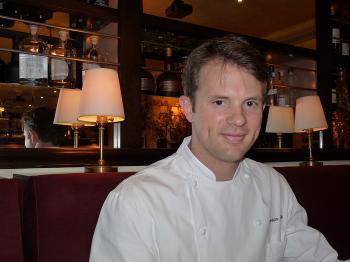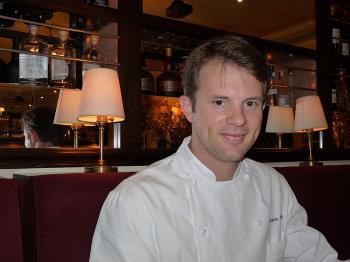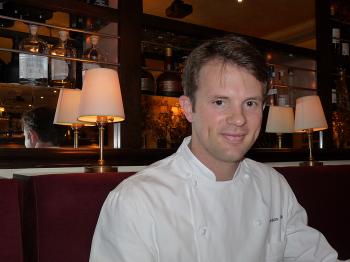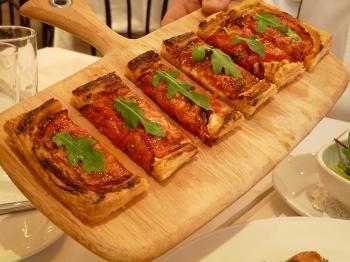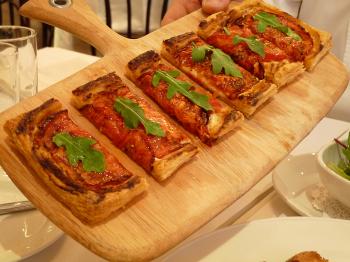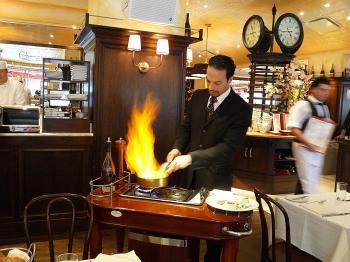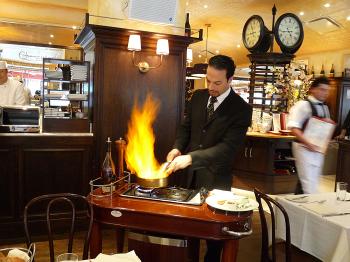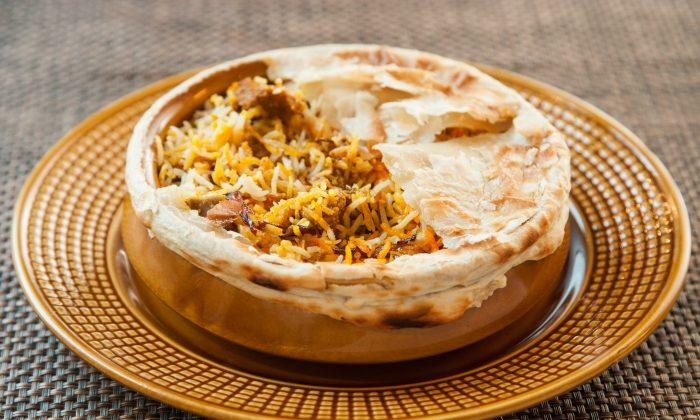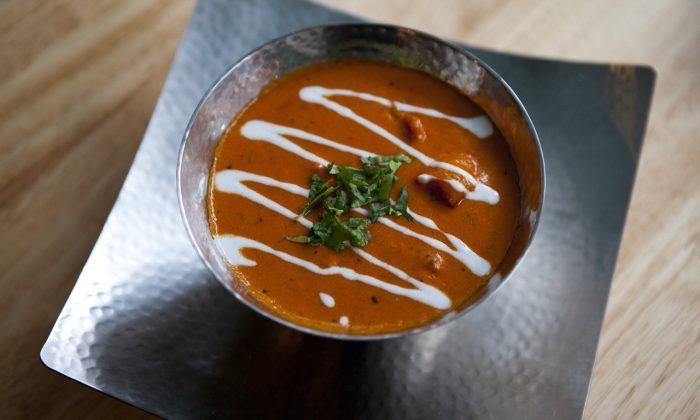On this day I sat with the chef of Cognac, a French brasserie in Manhattan. My first question to chef Florian V. Hugo was if he was related to one of France’s greatest poet, play writer, and novelist, Victor Hugo, to which he replied that, indeed, he was. He is a fifth generation of the Hugo family.
Hugo told me that he comes from a family of artists and poets. His father, a talented goldsmith, had special relationship with the contemporary artists like Picasso and Andre Doran designing jewelry and medallions.
Hugo said, “Until the age of 12, I [thought I] was going to fall into father’s steps.” Later, however, he found himself on a different path. As he grew older, and with an intellectual mother, Hugo wanted to be a diplomat and went to study political science and economics but that was not to be. “I love the creation of ceremonial dinners. I love food and I love to eat,” he told me with a childlike and innocent smile.
Hugo’s formal culinary education began with six months study and six months of internship at Ecole des Arts Culinaires et de l’Hotellerie, Ecully in Lyon. He then went to work in Paris, Monaco, and London. His last stop was Denver working in a French bistro prior to being at Cognac. His extensive training and significant knowledge comes from the rigorous training of French techniques. He said that each apprentice has to endure to a relatively great amount of suffering during training, where hierarchy is a regimented policy.
Cooking as a profession is taken very seriously in France, and he trained under two legends, Paul Bocuse and Alain Ducasse. His best and most rewarded suffering being the eight years of training with Ducasse, Hugo said, “It was good suffering and the best training you can have.”
Chef Hugo believes that knowledge of French cooking heritage is a blend of classic techniques and old-fashioned innovation, “Everything starts with a technique in the kitchen. Then the why’s, ‘Why do I peel this way?’”
One of the many challenges he faces in the kitchen is the training and the transfer of knowledge to a diverse ethnic staff and how to explain to them his vision of taste. “Here I have to be a diplomat and be flexible to get a point across,” he says. Hugo wants to bring a sense of authenticity. “We want everybody to be happy and want to make this food available to everybody to enjoy. Tastes do not lie.” It is something that stays in your mouth. Everything is fresh. Bread is baked every three hours in Cognac’s bakery adjacent to the dining room.
This can be dipped in the Lobster Bisque that is prepared using a long process with three steps and served at your table in a ceremonial way. There is a knack to pouring the soup and the cream over the white mushroom and porcini cubes to get the emulsion, giving the soup a superb flavor.
If you are at the bar and want to enjoy a snack with your drinks, try one of France’s famous street classic, another reminder that you could be in Paris: Croque Monsier, prepared with crunchy sandwich bread, pan seared with clarified butter, topped with béchamel, ham, and Swiss Emmenthal and finished in the salamander for the gratin effect on top. For a lighter snack, a favorite item is the Tomato Tart made with puff pastry, roasted tomato, fresh goat cheese, and thyme. It looks simple, but the process is complex and takes half a day to make. The blend of textures and flavors were superb, the smoothness of the tomatoes with the crispy and flaky pastry, the tangy taste of tomatoes with the saltiness of the cheese.
Behind Every Dish There Is History, And Every Dish Has Its Own Personality
While it looks easy, French food is quite complicated to prepare. An example is Blanquette de Veau, a favorite entree. This is a traditional French veal stew with vegetable tournes served along basmati rice. Even though it looks simple, it takes two days to make it the way grandmother did.
On the lighter side and, as a summer dish, try the Poached Salmon over a bed of sautéed leeks. The Scottish salmon is poached in Béarnaise sauce and made with red wine. The free-range chicken rotisserie is served the way my mother used to make it and the way I really like it, with the meat falling off the bones, well-done, and cooked for hours. The chicken comes with tarragon and with creamy garlic mashed Yukons Golds. Tarragon is a strong herb and is a good compliment to the free-range chicken.
The desserts are not to be missed. The Floating Island with poached meringue sitting gently in a pool of crème anglaise topped with caramel lace. I loved the contrast. This dessert is very difficult to make and to keep the design because it melts from heat and humidity. Rose Macaron, where only a celebration will induce you to create it. The macaroons need the right amount of eggs and sugar to keep them from getting hard. These macaroons were soft, covered with a layer of rose cream and berry sauce, fresh raspberry, and lychees, just like a naïve pink rose-petal color with a long lasting almond chewy finish.
Finish with a light drink for digestif, Poir Granite, made with 50 different types of pear, very light and refreshing. Hugo said that his customers eat with pleasure and some come three times a day for breakfast, lunch, and dinner. He told me that they eat with happiness. Indeed that is the feeling one gets at Cognac.
Brasserie Cognac is located at 1740 Broadway, New York, NY 10019 (212) 757-3600. http://www.cognacrestaurant.com.Email: [email protected]

